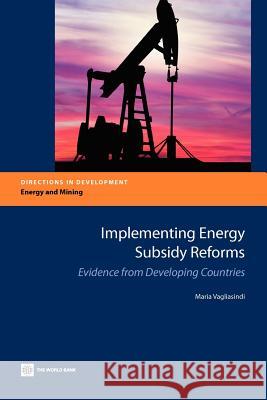Implementing Energy Subsidy Reforms » książka
Implementing Energy Subsidy Reforms
ISBN-13: 9780821395615 / Angielski / Miękka / 2012 / 317 str.
Poorly implemented energy subsidies are economically costly to taxpayers and damage the environment. This report aims at providing the emerging lessons form a representative sample of case studies in 20 developing countries that could help policy makers to address implementation challenges, including overcoming political economy and affordability constraints. The sample has selected on the basis of a number of criteria, including the country's level of development (and consumption), developing country region, energy security and the fuel it subsidies (petroleum fuel, electricity, natural gas). The case studies were supported by data collection related to direct budgetary subsidies, fuel and electricity tariffs, and household survey data. The analysis provides strong evidence of the success of reforms in reducing the associated fiscal burden. For the sample of countries, the average energy subsidy recorded in the budget was reduced from 1.8% in 2004 to 1.3%GDP in 2010. The reduction of subsidies is particularly remarkable for net energy importers. Pass-through of international fuel prices was also notable in the case of electricity generated by fossil fuel. For the sample of countries, the average end-user electricity tariff increased by 50%, from USD 6 cents in 2002 to USD 9 cents per kWh in 2010. In spite of the relatively price inelastic demand for gasoline and diesel, fossil fuel consumption in the road sector (per unit of GDP) declined in the 20 countries examined from 53 (44) in 2002 to about 23 kt oil equivalent per million of GDP in 2008 in the case of gasoline (Diesel). The most notable decline in consumption was recorded in the low and lower middle income countries. This reflects the much higher rate of growth in GDP in this group of countries and underlines the opportunities to influence future consumption behavior rather than modifying the existing consumption patterns, overcoming inertia and vested interests. Similar trends are recorded for power consumption. While there is no one-size-fits-all model for subsidy reform, implementation of compensatory social policies and an effective communication strategy, before the changes are introduced, reduces helped with the implementation of reforms.











